Adventure Travel
Pole Pole: Scaling Africa’s highest summit
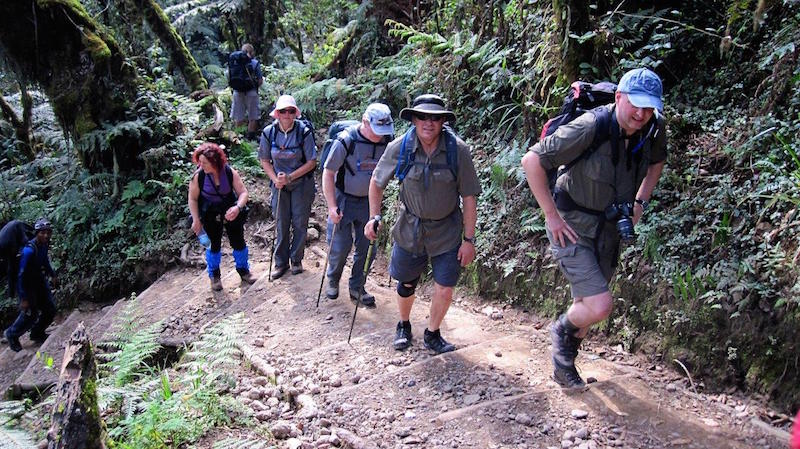
Photo by Eva Melusine Thieme
The night is still. We’ve switched off our headlamps, as the moon is sufficiently bright to light the way. The mountain is bathed in a soft glow, and up above an occasional twinkle betrays the presence of hikers far ahead of us. The air is so crisp that it hurts to breathe, but I’m aware that it could be far worse: According to the pocket guide buried deep in my pack, we could be caught in a storm, it could be snowing, or we could be covered in sheets of ice.
Even so, I am colder than I have ever been in my life.
I’m not sure exactly what possessed me to join the ranks of some 35,000 people who annually attempt to climb Mount Kilimanjaro. Yes, it’s Africa’s highest peak. It’s also the highest free standing mountain in the world, rendering the idea of standing on its top at 19,341 feet above sea level that much more alluring. But I’ve never really had the urge to stand on such a summit before. I don’t hike. I don’t even like to walk my kids to the school bus in the morning, and that’s about two minutes on a flat road. What could possibly be enticing about seven days of walking, most of the time uphill? Let alone facing altitude sickness, blistered feet, and long drop toilets—the list of discomforts when scaling the “Roof of Africa” is long.
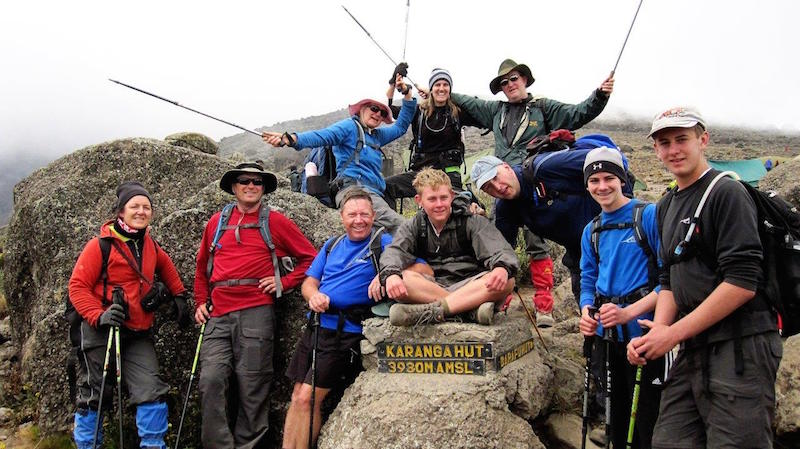
Photo by Eva Melusine Thieme
Yet somehow I set my heart on climbing Kili, as insiders fondly call it. Not only that, I also convinced my teenage son to accompany me. Perhaps it was a desire to say goodbye to Africa from its highest point before returning home after three years as expats in Johannesburg. Perhaps it was the temptation of escaping my housewife persona for an entire week, letting others prepare my meals and carry my stuff. Or perhaps it was the realization that if I were to keep a bucket list and wanted to put conquering a mountain on it, the one in the tropics smack on the equator would be the most palatable candidate.
Except “tropics” is not what comes to mind right now. Even though I’ve prepared for this and look like a mummy in all my layers of clothing, I’ve long ago lost the ability to wiggle my fingers and toes. The cold air stings my lungs with each tortured breath, despite the balaclava pulled up over my nose. Our column snakes up the impossibly steep slope so slowly it’s comical. Ten steps, rest, turn right, ten steps, rest, turn left. Long past having any use for words, we trudge along, one step at a time, our sole focus the footprint of the person before us. The admonishments to go pole pole (poh-leh poh-leh, Swahili for slowly), so often repeated by our guides the first few days, have long ceased. No need to tell us to go slowly; we couldn’t speed up if you pointed a gun at our heads.
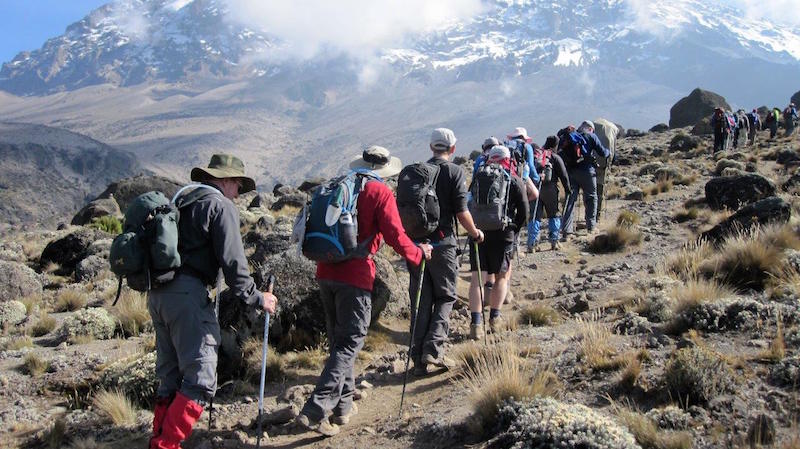
Photo by Eva Melusine Thieme
I have plenty of time to let my thoughts wander, and they stubbornly converge on a single question: Why do we have to scale this last piece of mountain – 4,052 more feet of elevation from Barafu, our final camp before the push for the summit – in the middle of the freezing night? The answer might be found in history: We have to thank Hans Meyer, a German professor of geology at the University of Leipzig, for setting the precedent in the year 1889. He had returned to Kilimanjaro after two failed tries to place Germany’s “imperial flag” on the “topmost pinnacle of the Kaiser Wilhelm’s Peak,” as the mountain was known at the time. The night before their planned summit attempt, he and his Austrian climbing partner Ludwig Purtscheller were unable to sleep due to “the uncertainty of what the next day might bring forth,” a predicament I can relate to, as only a few hours ago I also lay in our tent tossing and turning and filled with anxiety. They “kept striking matches to see the time… every quarter of an hour,” and finally, at 2:30 in the morning, they could stand it no longer and set out into the cold and pitch dark night.
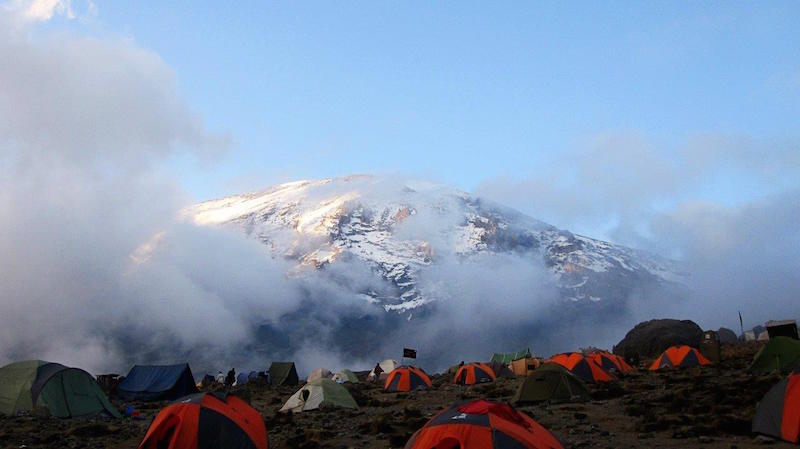
Photo by Eva Melusine Thieme
While Meyer and Purtscheller took three more days to reach the summit, slowed down by having to hack steps into the solid ice reaching much farther down the mountain than it does today, we have a clear path ahead of us. Even so, we seem to be getting no closer to the top. It’s incredibly hard. I can’t imagine ever having faced a more daunting task, and I begin to doubt that I can make it. Just as I want to sink down and refuse to take another step, the most remarkable thing happens: The night erupts in song. First, a faint whisper from our guide ahead, then more guides chiming in from behind, the beautiful Swahili singing wafting back and forth and slowly carrying us up the mountain like an enchanted wave. As surely as if we’d swallowed steroids, the singing works its magic and gives us a new spring in our steps. And with sudden clarity I know that I will make it.
I am so mindlessly following Godlisten, our guide, that when we finally crest the ridge overlooking the crater, I bump into him when he stops abruptly. He turns around, spreads his arms open wide, and I stumble into them, filled with joy at having reached Stella Point, a mere 558 feet below the summit, and yet letting out big, heaving sobs. And then, just when all of us have shed our backpacks and flung ourselves to the ground, we see it: the sun, slowly emerging out of the sea of clouds below us and rising against the jagged outline of Mawenzi, Kili’s other peak, turning the dull brown moonscape around us to fiery copper and casting the magnificent glaciers, the fabled “Snows of Kilimanjaro,” into a pink glow.
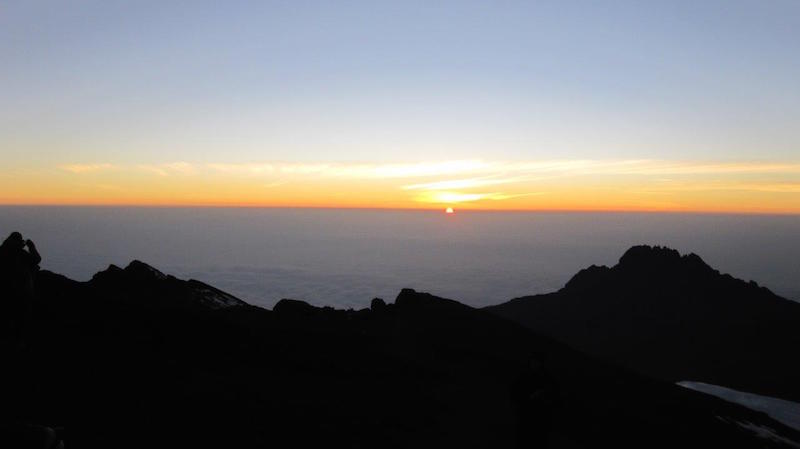
Photo by Eva Melusine Thieme
After this most glorious of African sunrises, everything seems possible. Pole pole we will scale this last bit of mountain, one small and determined step at a time. And then we will scale, pole pole, whatever obstacles and challenges the rest of our lives may bring.
This essay is adapted from Kilimanjaro Diaries: Or, How I Spent a Week Dreaming of Toilets, Drinking Crappy Water, and Making Bad Jokes While Having the Time of My Life by Eva Melusine Thieme.



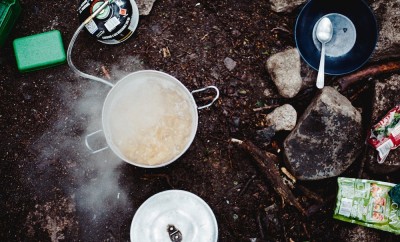

0 comments